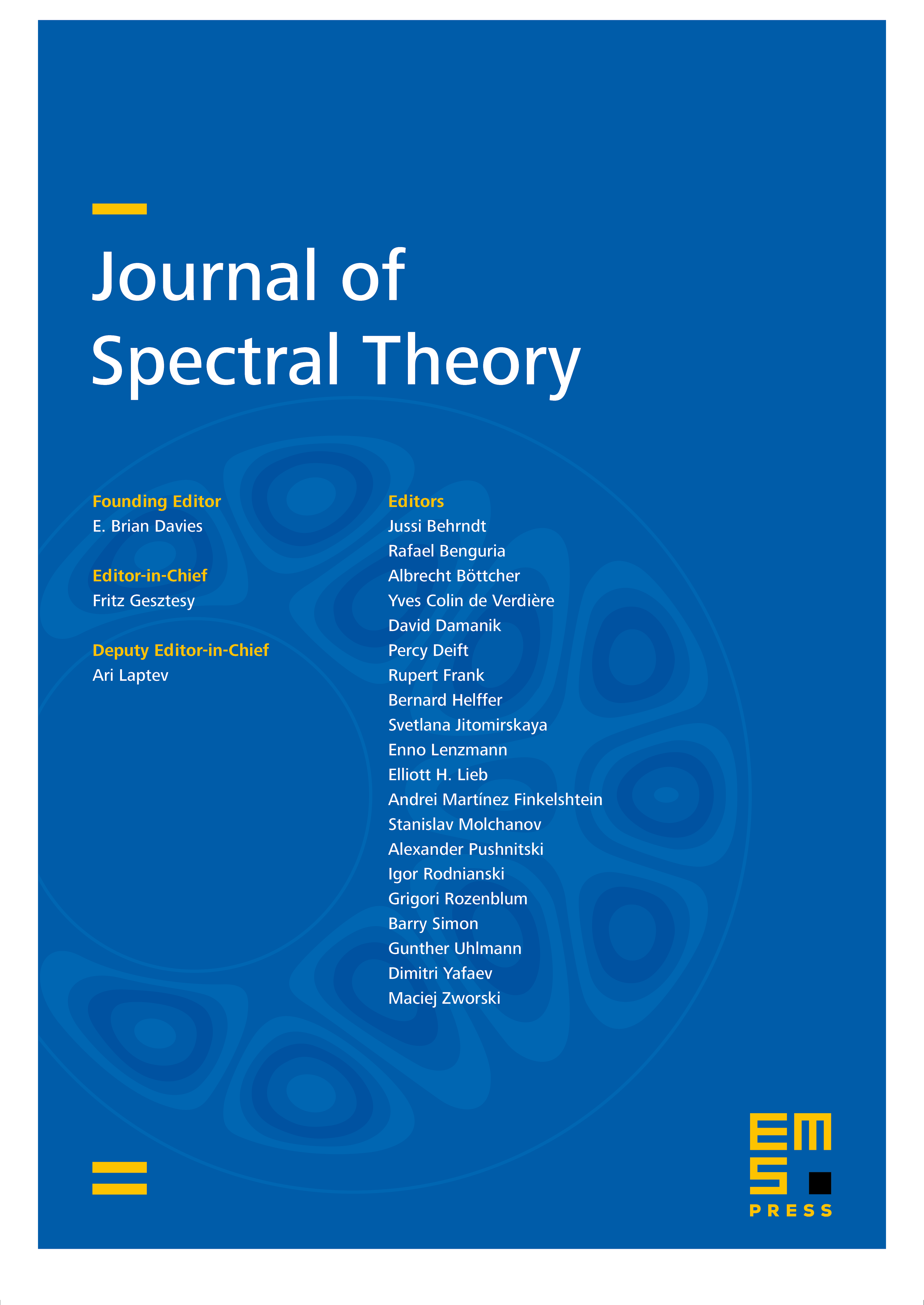Supersymmetry and Schrödinger-type operators with distributional matrix-valued potentials
Jonathan Eckhardt
Universität Wien, AustriaFritz Gesztesy
Baylor University, Waco, USARoger Nichols
The University of Tennessee at Chattanooga, USAGerald Teschl
Universität Wien, Austria

Abstract
Building on work on Miura's transformation by Kappeler, Perry, Shubin, and Topalov, we develop a detailed spectral theoretic treatment of Schrödinger operators with matrix-valued potentials, with special emphasis on distributional potential coefficients. Our principal method relies on a supersymmetric (factorization) formalism underlying Miura's transformation, which intimately connects the triple of operators of the form
Here in , with a matrix-valued coefficient , , thus explicitly permitting distributional potential coefficients in , , where
Upon developing Weyl–Titchmarsh theory for these generalized Schrödinger operators , with (possibly, distributional) matrix-valued potentials , we provide some spectral theoretic applications, including a derivation of the corresponding spectral representations for , . Finally, we derive a local Borg–Marchenko uniqueness theorem for , , by employing the underlying supersymmetric structure and reducing it to the known local Borg–Marchenko uniqueness theorem for .
Cite this article
Jonathan Eckhardt, Fritz Gesztesy, Roger Nichols, Gerald Teschl, Supersymmetry and Schrödinger-type operators with distributional matrix-valued potentials. J. Spectr. Theory 4 (2014), no. 4, pp. 715–768
DOI 10.4171/JST/84